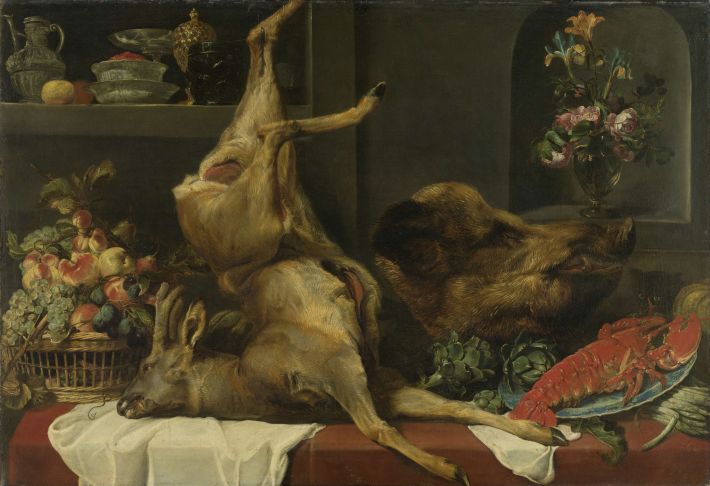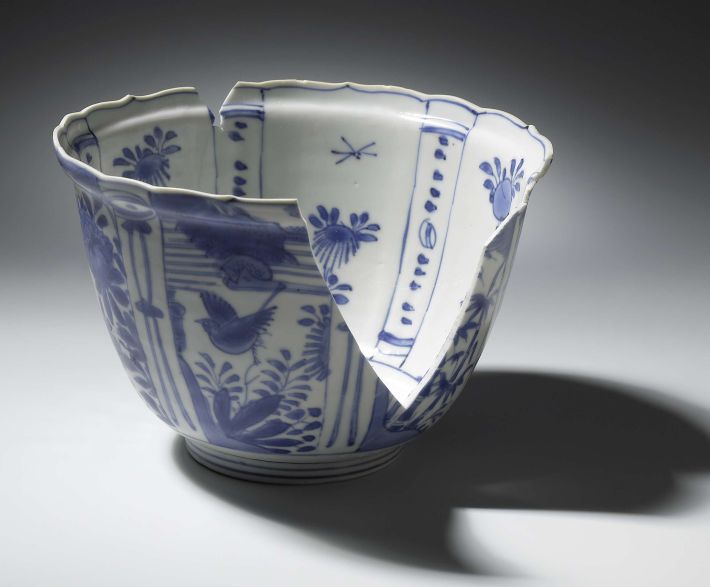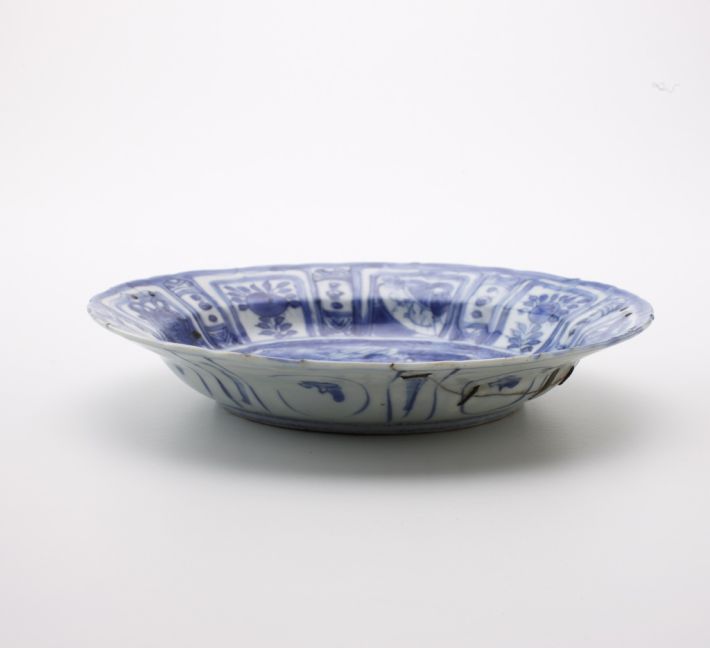Ceramics in the Ximenez-Da Vega Inventory
There are two main types of ceramics in the inventory, the more precious, porcelain, and the more common, majolica. In addition to these items, the household also contained a number of plain earthenware vessels, which would have been used mainly for storage and preparation of food and drink.
Porcelain is listed in two of the rooms in the building; in addition to the small porcelain room ("porceleynkamerken"), we find a basket with seven porcelain bowls and four porcelain dishes in the bottling room. In the porcelain room are listed an assortment of large and small bowls, and about two dozen dishes, several of which are broken. In total, fifty-three objects are inventoried as pieces of "porcelain." In terms of shape, they are mostly bowls ("kommekens") and dishes ("schotelkens"), but there is also a porcelain box ("doosken") and five saucers ("saucierkens"). What we refer to as "porcelain" in English, an impermeable translucent ceramic material made from china clay and/or kaolin and fired at 1300°C or above, was not produced successfully in Europe until the beginning of the eighteenth century, so it is very likely that the Ximenez-Da Vega porcelain had all been manufactured in China.
Beyond the porcelain, there are a total of 242 ceramic items in the inventory identified as majolica ("geleyers" or "gleiswerk"), which means the wares were finished with a tin glaze. Compared to the quantity of porcelain, the household owned far more majolica. There are a great variety of shapes (dishes, bottles, bowls, pots, plates, and spoons), and there are individual items with a specified use, such as salt cellars, syrup pots, sugar pots, fruit plates and marmalade dishes. The vast majority of these items were kept in the porcelain room, together with porcelain as well as crystal and glass. It seems likely that these objects were in regular use. In an ordinary household, wooden and tin plates would have been the most common tableware, and in the Ximenez-Da Vega inventory there are five and a half dozen of the latter. But the majority of the plates in the inventory are majolica, suggesting they were for the ones used by the family for dining. We also have a few hints of the colors and designs of these objects: they are described as "both painted and other" or "some white and some painted," so some of these were the multi-colored glazed and painted majolica that we know so well from museum collections; however, a good number of the inventory's plates were undecorated.
The technology of tin-glazed ceramics had a long trajectory by this time. Created initially in the Middle East, then transferred across the Mediterranean (called faenza in Italy, majolica in Malaga, Spain), and during the course of the sixteenth century to Northern Europe, notably to Antwerp, where it was introduced by Venetian potters. Finally majolica ware appeared in Delft in the Netherlands and Southwark in England in the seventeenth century. A painting of 1600 by Frans Snijders (1579-1657), who lived in Antwerp all his life, shows several differently shaped examples in the alcove: a stoneware jar, a kraakware bowl, such as that from the Witte Leeuw in the Rijksmuseum, shown here, and a shallower porcelain dish, such as the repaired example now in Sydney.
Literature
Carswell, John. Blue & White: Chinese Porcelain Around the World. London: British Museum Press, 2000.
Dumortier, Claire. Céramique de la Renaissance à Anvers: De Venise à Delft. Paris: Amateur, 2002.

Frans Snijders, Still Life with Dead Game, Fruit, and Flowers, c. 1600, Rijksmuseum, Amsterdam. Image: © Rijksmuseum.

Blue and white bowl from the Dutch East India Company ship de "Witte Leeuw," Jingdezhen, before 1613, Rijksmuseum, Amsterdam. Image: © Rijksmuseum.

Kraakware porcelain dish in underglaze blue, Jingdezhen, late sixteenth to early seventeenth century, Art Gallery New South Wales, Sydney, Australia. Image: © Art Gallery New South Wales.


